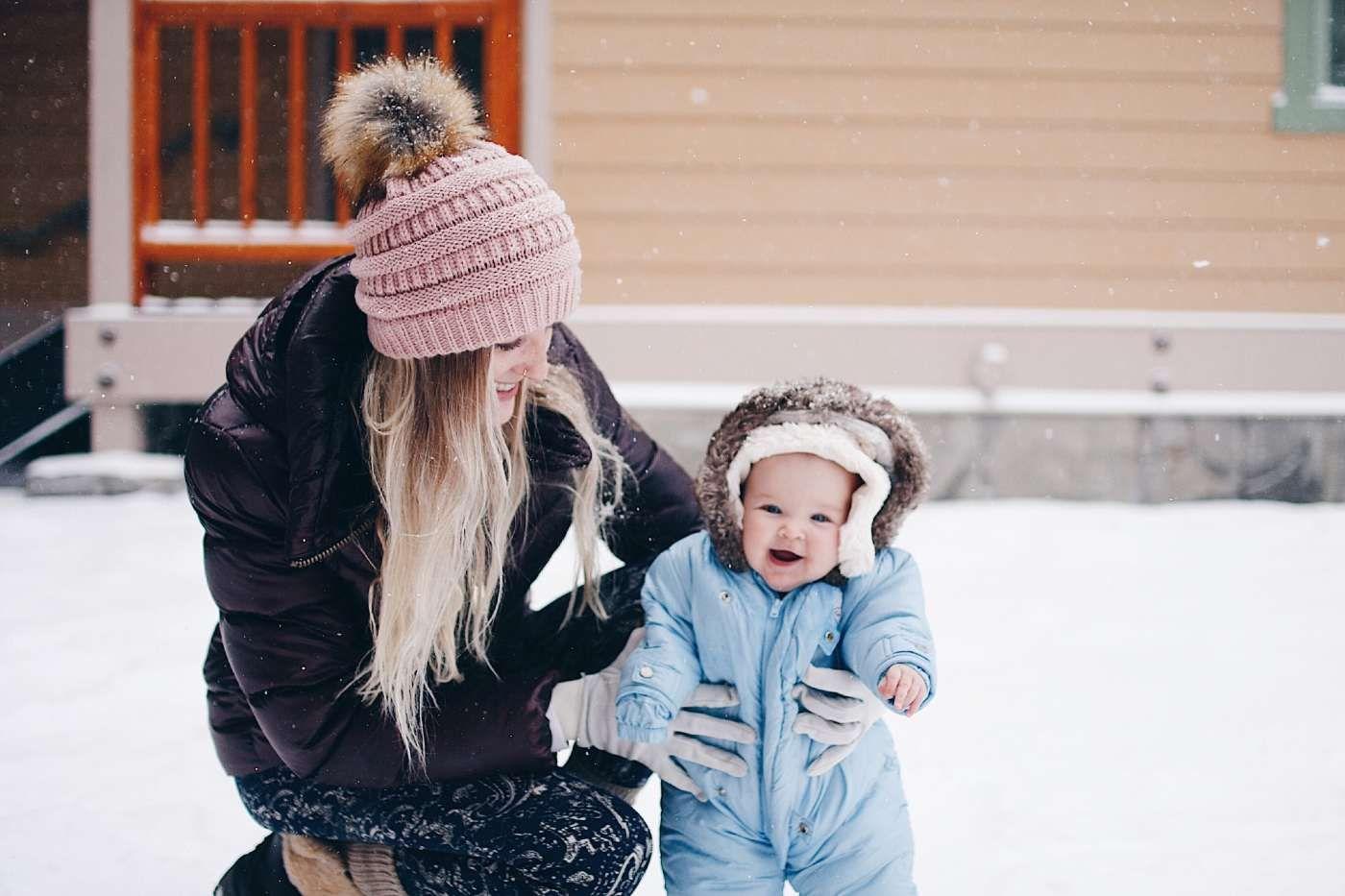BABY
How to Keep Kids Safe and Warm in Freezing Weather
Baby, it's cold outside! Here is how to cope.

Written by
Dr. Harvey Karp

SHARE THIS ARTICLE
PARENT PICKS
Bestsellers
BABY

Written by
Dr. Harvey Karp

SHARE THIS ARTICLE
Bestsellers
When dropping temperatures are enough to chill to the bone even the heartiest among us, parents may wonder: How cold is too cold for a baby? Or a toddler for that matter!
Everyone’s tolerance for the cold is a bit different (there is always that one guy who shovels his driveway…in shorts!). But for little kids there comes a point where the cold isn’t just uncomfortable, it is downright dangerous. So, even as the snow outside begs to be frolicked in, here is a quick guide to help you enjoy the winter weather…while keeping Jack Frost from nipping a little too meanly at your little one’s nose.
Babies and young children are more susceptible to the dangers of extreme temperatures because their bodies are not as good as regulating body temperature as their grown-up counterparts. They have very little subcutaneous fat (the layer of fat that acts as insulation to help keep us warm).
Also, your child’s head is a very big part of their body. As a proportion of their body, it is about 20% of the total surface area…an adult head is just 13%. So, a child with an uncovered head gets colder much faster than an adult with an uncovered head.
Plus, their small bodies have not yet learned how to shiver efficiently, which is a mechanism that creates heat. This means that hypothermia is a bigger threat to babies and toddlers than it is for adults.
Freezing temperatures occur when the mercury dips to 0 degrees Centigrade or below. Babies who are well bundled can be in this temperature safely for short stints, but it is wise to watch for signs of discomfort such as fussing, red nose and digits, and blue lips…and definitely do not dawdle outdoors longer than you need to.
When the thermometer reads -6 degrees or lower, the temperature is too cold for a baby. If you must be outside in extreme temperatures, take measures to make sure your child is not exposed to the elements for more than a few minutes at a time.
You will also want to keep an eye on the wind. The wind chill factor means that the wind exaggerates the effect of the cold as it brushes against our bodies pulling heat off of our exposed skin or thin garments. Sometimes 0 degrees can feel more like -6, making exposure for your child more uncomfortable…and potentially more dangerous.
Babies and little kids can play comfortably outside in cold temperatures when they are dressed appropriately…and that means layering up!
Frostbite, and hypothermia are two conditions caused by exposure to the extreme cold for too long.
Frostbite is when the skin (and possibly underlying tissue) essentially freezes. Extremities like fingers, toes, noses, and ears are most likely to get frostbitten. The skin may burn, feel prickly, or even go numb. The affected skin could look waxy, red, whiteish, or gray, or in some cases may blister.
If you suspect frostbite…
Hypothermia happens when your internal body temperature drops below 35 degrees. It is a dangerous condition and requires immediate medical attention. Some signs that your child might be hypothermic include intense shivering, drowsiness, clumsiness, lethargy, slurring words, or weak pulse.
One curious aspect of hypothermia is that it can actually occur in temperatures as high as 10 degrees Celcius, especially if the person is wet and chilled. Wet clothing can draw heat away from the body, so it is important to keep kids and babies dry in any cool temps. If you suspect hypothermia…
As scary as that all sounds, as long as you take precautions, you can still keep winter days…delightful, not frightful!
Disclaimer: The information on our site is NOT medical advice for any specific person or condition. It is only meant as general information. If you have any medical questions and concerns about your child or yourself, please contact your health provider. Breastmilk is the best source of nutrition for babies. It is important that, in preparation for and during breastfeeding, mothers eat a healthy, balanced diet. Combined breast- and bottle-feeding in the first weeks of life may reduce the supply of a mother's breastmilk and reversing the decision not to breastfeed is difficult. If you do decide to use infant formula, you should follow instructions carefully.